How to manage Flies
Learn methods for identifying and managing Flies to safeguard your home and business.
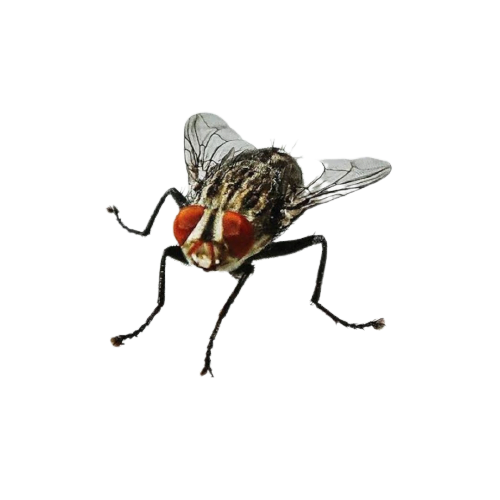
Discovering the World of Flies
Flies are tiny insects belonging to the order Diptera, scientifically known as Diptera, which refers to their possession of two wings. Unlike other insects, they have only one pair of wings. Flies come in various shapes, colors, and sizes, and they exhibit incredible agility, allowing them to hover around. Their mouth structure is adapted for either sucking or piercing, depending on their feeding habits. Unfortunately, flies are known for transmitting diseases.
They frequently land on unsanitary surfaces such as rotting food, animal waste, and sewage, which exposes them to pathogens. When they subsequently land on our food or skin, they can transfer these disease-causing agents, potentially leading to infections like food poisoning, diarrhea, and other illnesses.
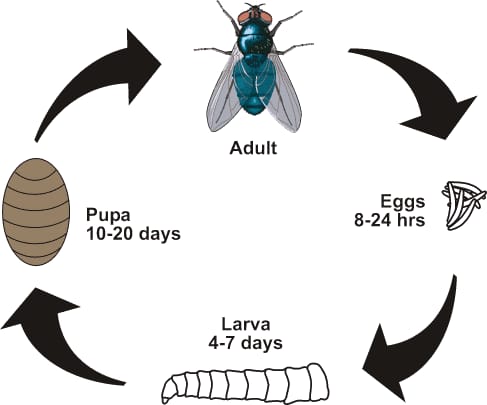
Life Cycle of Flies
Starting as tiny eggs, they hatch into larva (maggots), which feed on organic matter. Pupation follows, during which they transform into adult flies, emerging to mate and lay eggs.
The larvae stage, also known as the Maggot stage, is the second phase of the life cycle. Maggots resemble worms and have a pale color. They feed on animal corpses, manure, and garbage to grow.
After undergoing several molts, the larva enters the pupa stage and develops a protective shell. Inside this shell, they undergo full development before finally breaking free as adult flies.
This is the stage when they are fully developed and ready to mate, initiating the cycle anew.
TYPES OF FLIES
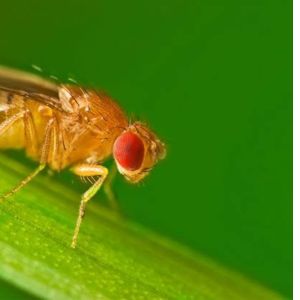
Fruit fly
These flies are found flying around fermenting fruits, hence the name “Fruit fly.” They are reddish-brown in color and have red eyes, with a length of 1/8 inch.
Fruit flies are not harmful to humans; however, they are a nuisance and can multiply quickly due to their rapid reproduction.
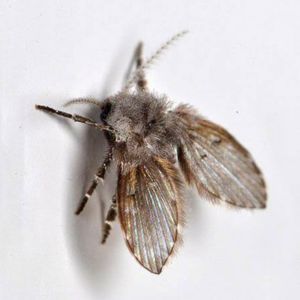
Drain fly
These flies are mainly found in drains, earning them the name “Drain fly.”
They have a frizzy appearance similar to moths and are about 1/8 inch in length, with a color ranging from gray to black.
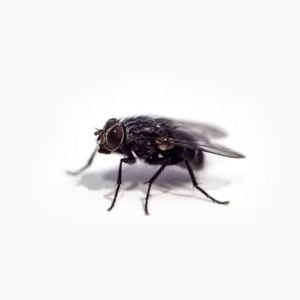
House Fly
As the name suggests, it is commonly seen in houses where food is present. It is gray in color and has four stripes on its thorax.
It is about ¼ inches in length. House flies have a tendency to sit on uncovered food sources, which can transmit diseases. However, these flies do not bite.
Overcoming Fly infestation
Files, or pests, are dangerous insects as they can carry pathogens that transmit diseases. Apart from causing disease transmission, they are also nuisances in our daily lives. To safeguard our health and businesses from these creatures, it’s essential to seek the assistance of pest control professionals. Their expertise ensures a pest-free environment through a systematic approach, preventing further infestations.
To effectively combat fly infestations, implementing proper and effective pest control strategies is crucial. Recognized as one of the top-notch pest control services in Dubai, Al Rasa employs a systematic and thorough approach to handle all types of infestations.
Frequently Asked Questions
The lifespan of flies varies depending on the species. Most species live for about 15 to 25 days.
Signs of a fly infestation include numerous live flies flying around your house, a concentration of flies in specific areas, and the presence of fly droppings.
Most flies are harmless to humans. However, certain species like horse flies can bite both humans and animals.
To prevent flies, consider the following measures:
- Regularly empty your trash bin.
- Keep doors and windows closed.
- Maintain a clean household.
Some interesting facts and information about Flies
- Flies taste with their feet. They have sensors on their feet that help them know the taste of the food.
- Flies have a wide field of vision.
- Flies communicate with each other with vibrations and pheromones.
- Flies play a vital role in the ecosystem as pollinators for certain plants.

The journey begins with the egg stage, during which female flies lay eggs after mating. They prefer warm, moist spaces for egg-laying. It takes approximately 8 to 20 hours for the eggs to hatch. A female fly can lay over 500 eggs in her lifetime.